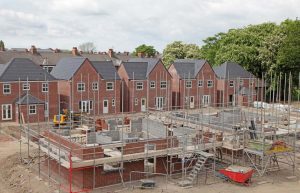Enfield Borough to receive £9,081,990 to provide a permanent place to live for rough sleepers. The largest share of funding of any authority in England.
• Rough sleepers across the country will have access to new, safe, long-term homes, along with support, backed by more than £150 million.
• First 3,300 of 6,000 planned new homes for rough sleepers to be delivered by March 2021.
• Conservative Government is investing more than £700 million to tackle homelessness and rough sleeping this year as part of manifesto commitment to end rough sleeping.
 Enfield Conservative Shadow Finance, Cllr James Hockney has welcomed the news that the Government is providing funding for Enfield Borough Council for new, long-term homes for rough sleepers and other vulnerable people.
Enfield Conservative Shadow Finance, Cllr James Hockney has welcomed the news that the Government is providing funding for Enfield Borough Council for new, long-term homes for rough sleepers and other vulnerable people.
In total, projects across England will receive more than £150 million to deliver more than 3,300 such secure homes by the end of March 2021, providing long term accommodation to vulnerable people to keep them safe from coronavirus and rebuild their lives.
Enfield Borough Council will receive £9,081,990 for local schemes that provide secure ‘move on’ style accommodation for people at risk of sleeping on the streets and is an important step towards achieving the Conservative Party’s manifesto commitment to end rough sleeping by 2024, alongside investment in new homes for social rent.
This is part of the Government’s investment of £433 million to deliver 6,000 new homes for rough sleepers by the end of this Parliament and builds on the widely praised ‘Everyone In’ campaign launched at the start of the pandemic which has helped support over 29,000 vulnerable people – enabling councils to keep rough sleepers safe this winter.
In total, 276 schemes have been approved across England, which will deliver 904 new homes for rough sleepers in London and 2,430 elsewhere across the country. This sits alongside the £91.5 million in grant funding given to councils to support vulnerable people and provide short term accommodation over the coming months, and a £10 million Cold Weather Fund to support winter shelters and ensure they are Covid-secure.
Commenting, Councillor James Hockney said:
“This Conservative Government, working closely with local authorities, has shown throughout the pandemic that it is willing to take the swift, decisive action necessary to keep some of the most vulnerable people in our community safe. On behalf of everyone I’d like to thank all those involved for everything they’ve done to get people off our streets and into secure, safe accommodation.”
“The ‘Everyone In’ campaign has protected thousands of lives. If we are to deliver on the promise we made in our manifesto to end rough sleeping by the end of the Parliament, then the people who have been helped need to be able to access long-term housing that gives them the safety and security they need to rebuild their lives, which is exactly what the funding announced today will do.”









